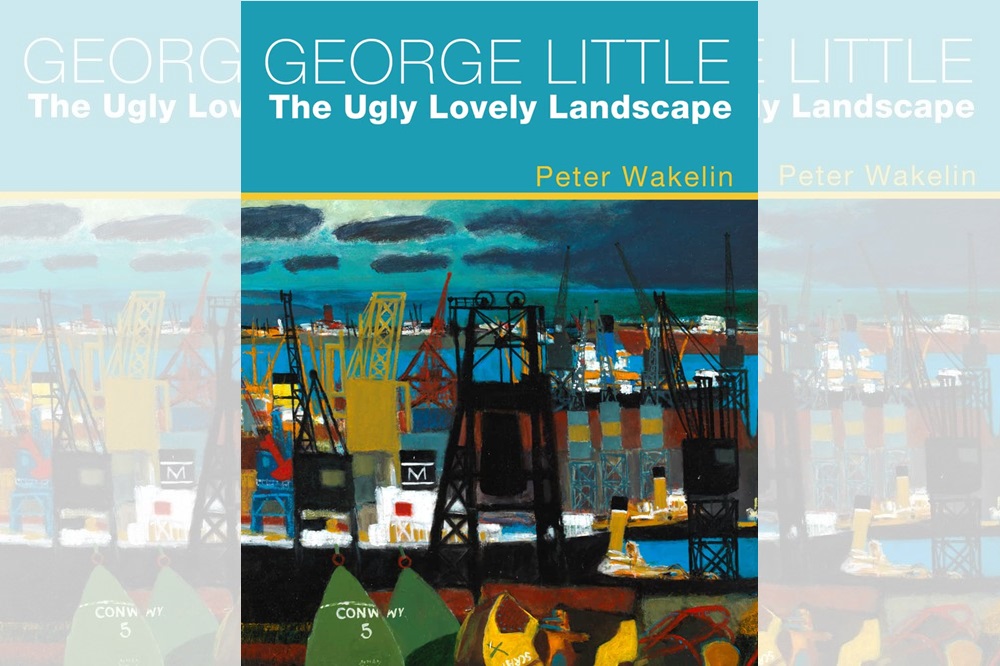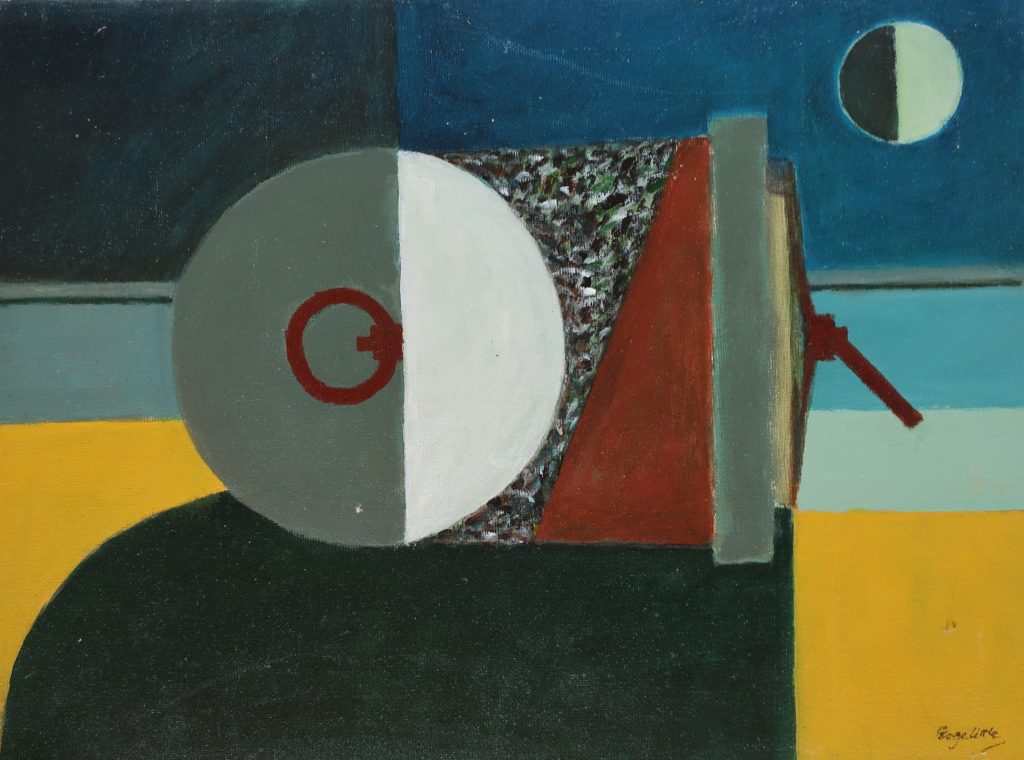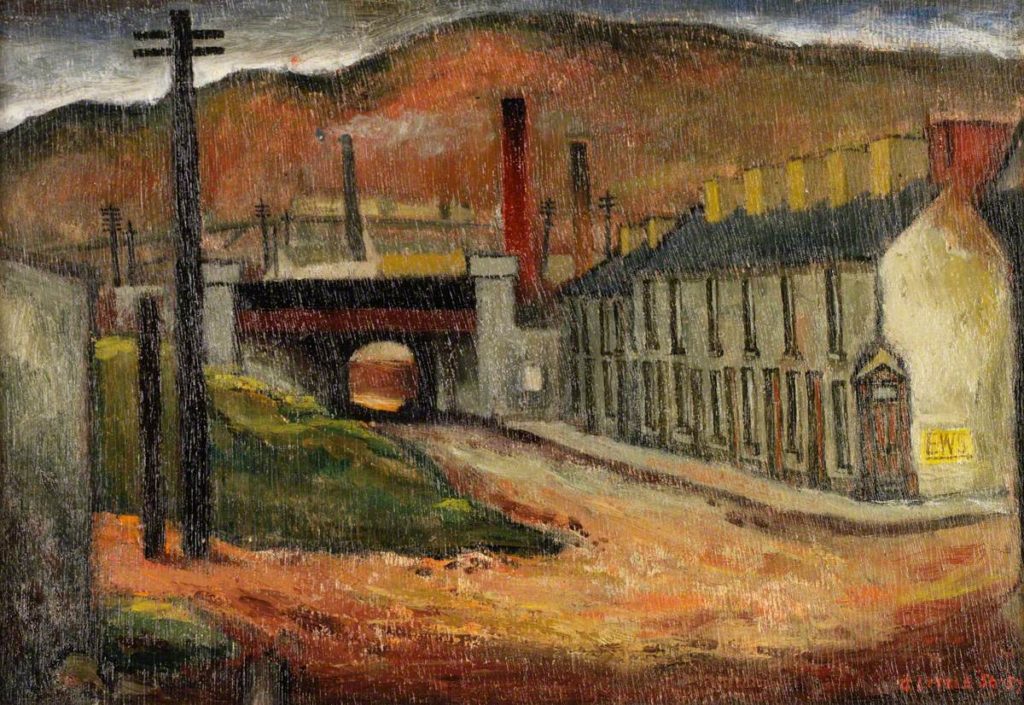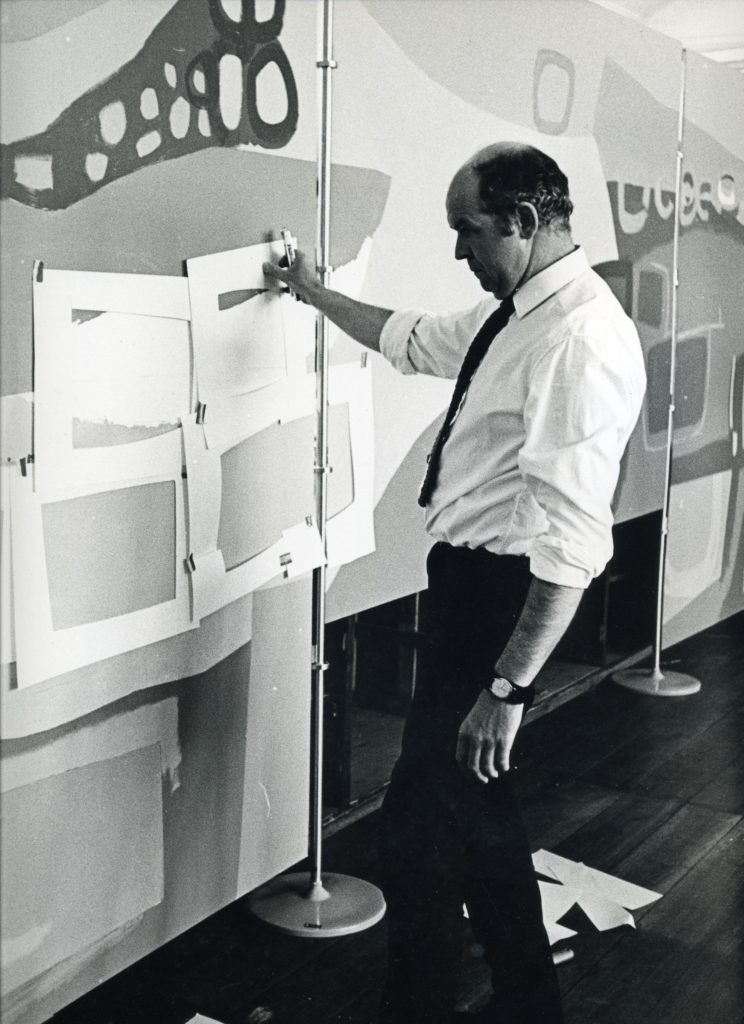Book review: George Little – The Lovely Ugly Landscape by Peter Wakelin

Sarah Morgan Jones
When destruction and dereliction are your muse, then there can be few better times and places to set up your easel than mid-century Swansea.
Once a metallurgical heartland, with seams of innovation, invention and productivity running through its very being, the ugly-lovely hometown of Dylan Thomas, Vernon Watkins, Alfred Janes and their contemporaries is as packed with artistic inspiration as it is with geology, history and industrial archaeology.
George Little captured the tail end of the growth, lived through the devastation of the blitz, and recorded, with an eye attracted to decay, the deindustrialisation of his hometown.
Urban underbellies
Born in the east end of Swansea in 1927 he grew up in Dan-y-Graig, on the slopes of Kilvey Hill, within sight of the abandoned copperworks, slag heaps and still-busy docks which would inspire him throughout his life.
A Swansea Grammar School scholarship boy, he began his art training Swansea College of Art and completed it at Ruskin School of Drawing in Oxford, an education interrupted at various points by the Blitz, becoming an evacuee, and later by National Service, which took him to Berlin in the aftermath of the Second World War.
He studied and taught throughout his life, working in Swansea, Barnsley and Barry, as well as seeking camaraderie in the Territorial Army, and never considered his learning to be finished.
Marriage, fatherhood and teaching took him to Yorkshire for some years, but he later returned to Swansea upon the breakdown of the marital relationship. From there, he met and married fellow artist, Carolyn Denny, entering a period of bold collaboration and creativity.
Together, they worked and explored at and a prodigious rate, seeing other worlds and landscapes, seeking out urban underbellies and always returning to Swansea.

Consistency of change
Peter Wakelin’s document to the Swansea artist, described as most ‘committed to recording and interpreting such landscapes’, is rich in detail and historical context arranged alongside Little’s striking images which are vibrant and hauntingly familiar.
While the hillscapes and coastlines naturally remain constant, and the hillside terraces still stand, now modernised, the consistency of change in the town which became a city is entirely man-made and -unmade.
Thriving docks dismantled, growing and receding with time, train lines run alongside roads – now replaced by ugly university buildings which would not look out of place in Poundbury, and flats with roadside balconies which can only be described as optimistic – all these places are captured in acrylic and watercolour and photographic stasis by Little as he stopped and looked and remembered for all of us.
In 2004, Little reflected: “Everywhere the images of my choice are disappearing: pithead wheels, slag heaps, heavy industry, the fishing industry, even the streets of workers’ houses, and the Swansea docks as I knew them are virtually no more … my subject matter is almost a memory.”

Evolution
Arranged by life stages of the man and industrial stages of the town, chapter headings include Townscapes, Copperopolis, Mines, Iron, steel and tinplate and perhaps most poignantly, Back to the Blitz.
In his final years, Little abstracts the trauma of the blitz of Swansea out of his mind’s eye and onto board in dangerous reds, flaming oranges, and broken buildings, remembering the shocking events of seventy years earlier when he watched the three nights of devastation, from his home and finally from the top of his aunt’s Mumbles garden, watching Swansea burn.
Wakelin curates images which document Little’s evolution, his interest in square form, the abstract, his return to favourite subjects and his pleasure in his selecting his medium to suit mood, texture and colour.
His studies in photography quickly capture a moment in time which stand up on their own terms as well as offering inspiration for painted works later in life.

Influenced by and working in circles which included artists such as Ronald Cour and Joseph Herman, Little was very much part of the group which marked the town out for its creativity, while also drawing inspiration from contemporary artists from further afield.
Impressive, but far from overwhelming, in both quality and accessibility, richly reproduced images and a life story well told, this book will appeal to those who, like me, may not know the whole of it but can appreciate and perhaps recognise the candid portraits of the artist’s home.
George Little – The Ugly Lovely Landscape is published by Parthian and available from good bookshops.
Support our Nation today
For the price of a cup of coffee a month you can help us create an independent, not-for-profit, national news service for the people of Wales, by the people of Wales.




